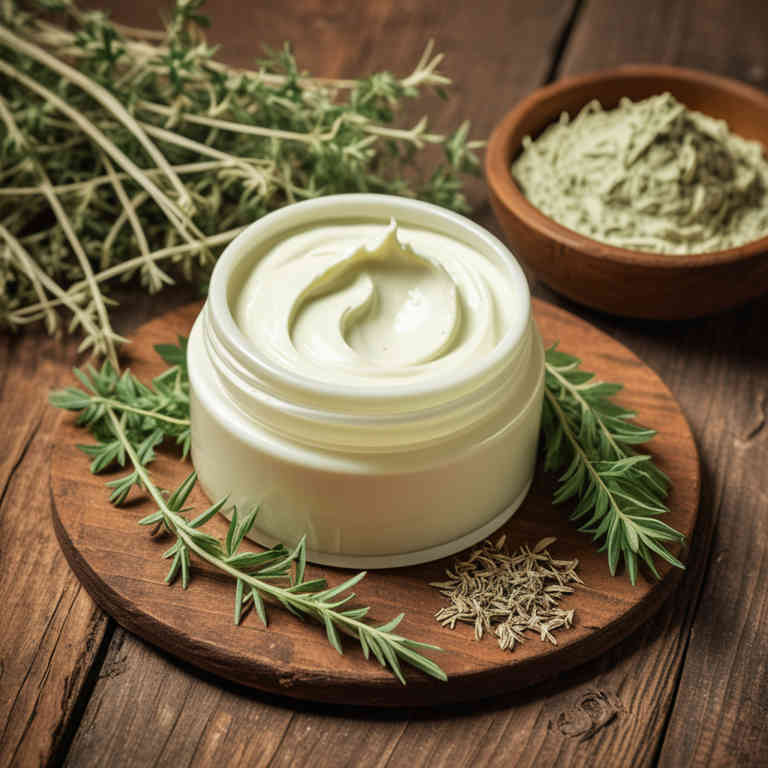Coriandrum sativum cream for medicinal use

Coriandrum sativum cream is a topical herbal preparation made from ground coriander seeds, often combined with a base such as coconut oil or beeswax.
This cream is used in herbalism to soothe skin irritations, reduce inflammation, and promote healing due to the anti-inflammatory and antioxidant properties of coriander. It is commonly applied to treat conditions like eczema, psoriasis, and minor burns. The essential oils in coriander also have a calming effect, making it useful in aromatherapy when applied topically.
Herbalists often recommend it for its ability to nourish and protect the skin while supporting overall wellness.
Uses
Coriandrum sativum cream has been used to treat various skin conditions and promote overall wellness for centuries.
Historically, it has been valued in traditional medicine systems such as Ayurveda and Chinese medicine for its anti-inflammatory and antimicrobial properties. In ancient times, coriander-based preparations were used to soothe skin irritations, reduce swelling, and enhance circulation. Modern applications include its use in topical formulations for eczema, psoriasis, and as a natural remedy for muscle pain and inflammation.
Today, it is also appreciated for its pleasant aroma and potential role in aromatherapy and holistic skincare routines.
Benefits
Coriandrum sativum cream has health benefits such as reducing inflammation, promoting skin healing, and providing antioxidant protection.
This cream is made from coriander seeds, which are rich in essential oils, vitamins, and minerals. It can help soothe skin irritations and may improve skin texture due to its antimicrobial and anti-inflammatory properties. The essential oils in coriander also have a calming effect, making it beneficial for stress-related skin conditions.
Regular use of this cream may support overall skin health and enhance the body's natural healing processes.
Constituents
Coriandrum sativum cream active constituents include compounds such as terpenes, flavonoids, and essential oils, which contribute to its therapeutic properties.
These components possess anti-inflammatory, antioxidant, and antimicrobial effects, making the cream beneficial for skin conditions and overall wellness. The essential oils in coriander, such as linalool and geraniol, help in reducing skin irritation and promoting healing. Flavonoids support immune function and may aid in reducing oxidative stress.
Terpenes contribute to the cream's soothing and calming effects on the skin.
Preparation
To make Coriandrum sativum cream, start by gathering fresh coriander seeds and a base of coconut oil or a suitable carrier oil.
Toast the coriander seeds gently in a dry pan until they become fragrant, then grind them into a fine powder. Mix the ground seeds with the oil in a ratio of 1 part seeds to 3 parts oil, and let the mixture steep for 24 hours to allow the oils to extract the beneficial compounds. Strain the mixture through a fine mesh or cheesecloth to remove any solids, and store the cream in a cool, dark place.
This preparation can be used topically for its soothing and anti-inflammatory properties.
Side Effects
Coriandrum sativum cream may lead to gastrointestinal discomfort, allergic reactions, or skin irritation in some individuals.
It is made from the seeds of the coriander plant, which contains compounds like linalool and terpinene, known for their anti-inflammatory and antioxidant properties. However, excessive use or sensitivity to these compounds can cause nausea, vomiting, or dermatitis. The cream may interact with certain medications, especially those affecting the liver or gastrointestinal tract.
It is important to consult a healthcare professional before using it, especially for prolonged periods or in high concentrations.